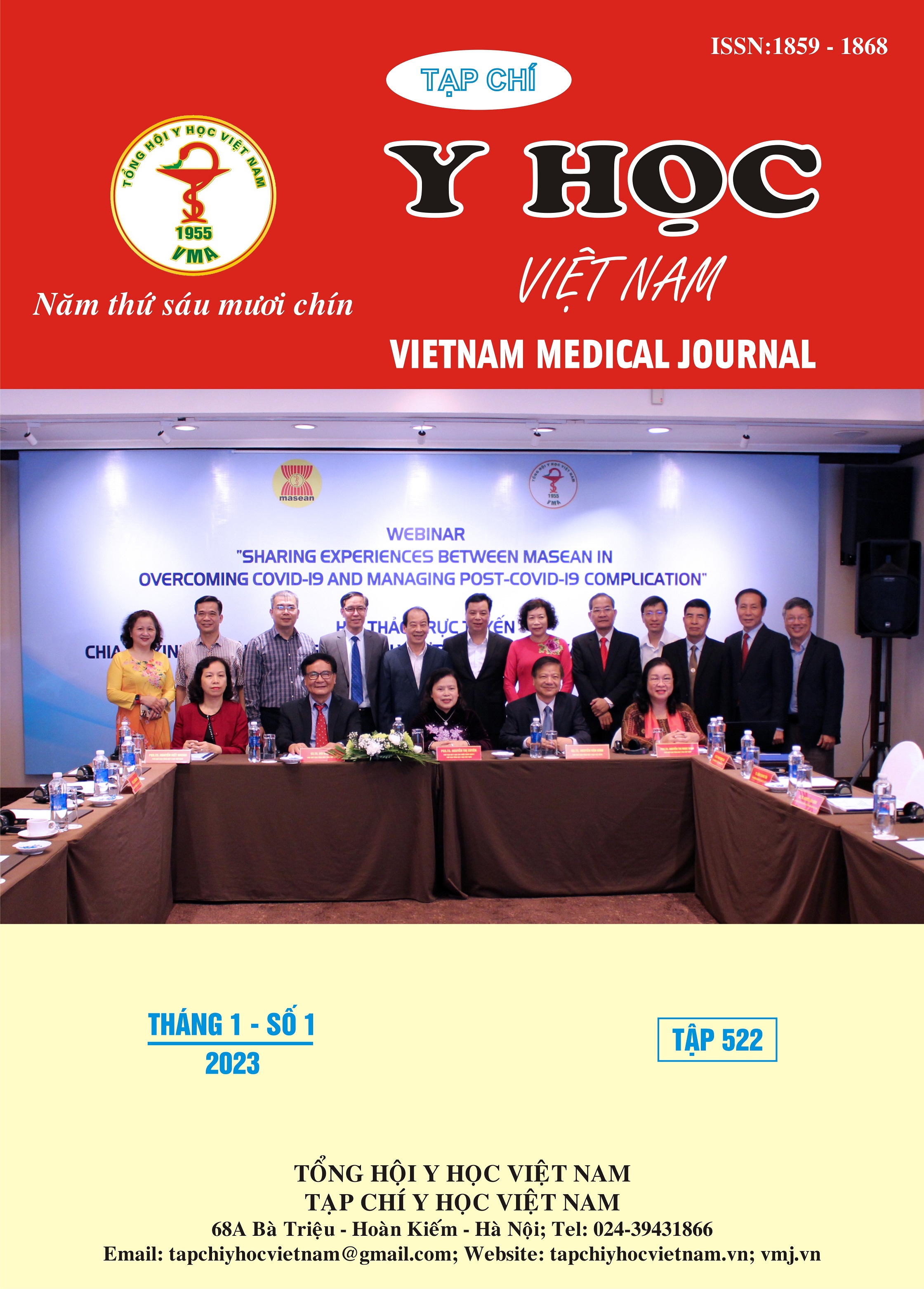ĐẶC ĐIỂM THIẾU MÁU VÀ QUÁ TẢI SẮT CỦA BỆNH NHÂN THALASSEMIA ĐIỀU TRỊ TẠI VIỆN HUYẾT HỌC TRUYỀN MÁU TRUNG ƯƠNG GIAI ĐOẠN 2020 – 2022
Nội dung chính của bài viết
Tóm tắt
Mục tiêu: Mô tả đặc điểm thiếu máu và quá tải sắt của bệnh nhân Thalassemia tại Viện Huyết học Truyền máu Trung ương giai đoạn 2020 – 2022. Đối tượng và phương pháp: Nghiên cứu mô tả cắt ngang trên 3097 bệnh nhân Thalassemia điều trị tại Trung tâm Thalassemia, Viện Huyết học Truyền máu Trung ương từ 01/2020 đến 03/2022. Kết quả: Nhóm bệnh nhân β-Thalassemia thể nặng có nồng độ huyết sắc tố trung bình thấp nhất và tỉ lệ bệnh nhân thiếu máu nặng và rất nặng cao nhất. Sự khác biệt về nồng độ huyết sắc tố trung bình và mức độ thiếu máu giữa các thể bệnh là có ý nghĩa thống kê (p < 0,05). Đa số bệnh nhân có thiếu máu mức độ vừa. Tuổi càng cao thì mức độ thiếu máu nhẹ càng tăng dần, còn mức độ thiếu máu nặng và rất nặng giảm dần. Một số dân tộc có mức độ thiếu máu nặng và rất nặng chiếm tỉ lệ cao như dân tộc Dao, Thái, Nùng. Giá trị trung bình nồng độ huyết sắc tố cao nhất ở khu vực đồng bằng sông Hồng và thấp nhất ở khu vực Tây Bắc Bộ. Nhóm bệnh nhân β-Thalassemia thể nặng có giá trị trung vị ferritin cao nhất và mức độ quá tải sắt trung bình và nặng cao nhất. Sự khác biệt về giá trị trung vị ferritin và mức độ quá tải sắt giữa các thể bệnh (trừ cặp β-Thalassemia thể trung bình và β-Thalassemia/HbE) là có ý nghĩa thống kê (p < 0,005). Một số dân tộc có bệnh nhân quá tải sắt mức độ nặng chiếm tỉ lệ cao như Sán Dìu, Dao, Nùng. Giá trị trung vị Ferritin huyết thanh ở nhóm bệnh nhân sinh sống ở khu vực Đông Bắc Bộ là cao nhất, khu vực đồng bằng sông Hồng là thấp nhất. Kết luận: β-Thalassemia mức độ nặng có mức độ thiếu máu và quá tải sắt nặng chiếm tỉ lệ cao, tập trung chủ yếu ở một số dân tộc miền núi phía Bắc.
Chi tiết bài viết
Từ khóa
Thalassemia, thiếu máu, quá tải sắt
Tài liệu tham khảo
2. Taher A. T., Saliba A. N. (2017). Iron overload in thalassemia: different organs at different rates. Hematology Am Soc Hematol Educ Program, 2017(1): 265-271.
3. Cappellini M. D., Cohen A., Eleftheriou A., et al. (2008), in Guidelines for the Clinical Management of ThalassaemiaThalassaemia International Federation© 2008 Thalassaemia International Federation.: Nicosia (CY).
4. Phùng Nhã Hạnh Nguyễn Văn Thường, Nguyễn Văn Long, Nguyễn Đăng Hoàn (2016). Nghiên cứu đặc điểm lâm sàng, xét nghiệm, kiểu đột biến và nhận xét hiệu quả truyền máu ở bệnh nhân Thalassemia tại bệnh viện đa khoa Xanh Pôn năm 2015. Y học Việt Nam, (448): 119 - 127.
5. Lê Thị Na Nguyễn Thị Huyền, Hà Mạnh Quyết, Nguyễn Thị Mây, Nguyễn Thị Hiền (2016). Nhận xét đặc điểm dịch tế - lâm sàng người bệnh Thalassemia điều trị tại trung tâm Huyết học - Truyền máu, bệnh viện đa khoa Phú Thọ. Y học Việt Nam, Số đặc biệt(448): 145 - 152.
6. Mohd Ibrahim H., Muda Z., Othman I. S., et al. (2020). Observational study on the current status of thalassaemia in Malaysia: a report from the Malaysian Thalassaemia Registry10(6): e037974.
7. Đào Thị Thiết Nguyễn Hà Thanh, Nguyễn Thị Thu Hà, Ngô Mạnh Quân, Bạch Quốc Khánh (2016). Đánh giá kết quả điều trị thải sắt bằng Deferasirox ở bệnh nhân Thalassemia tại viện Huyết học - Truyền máu Trung ương. Y học Việt Nam, Số đặc biệt(448): 137 - 144.


